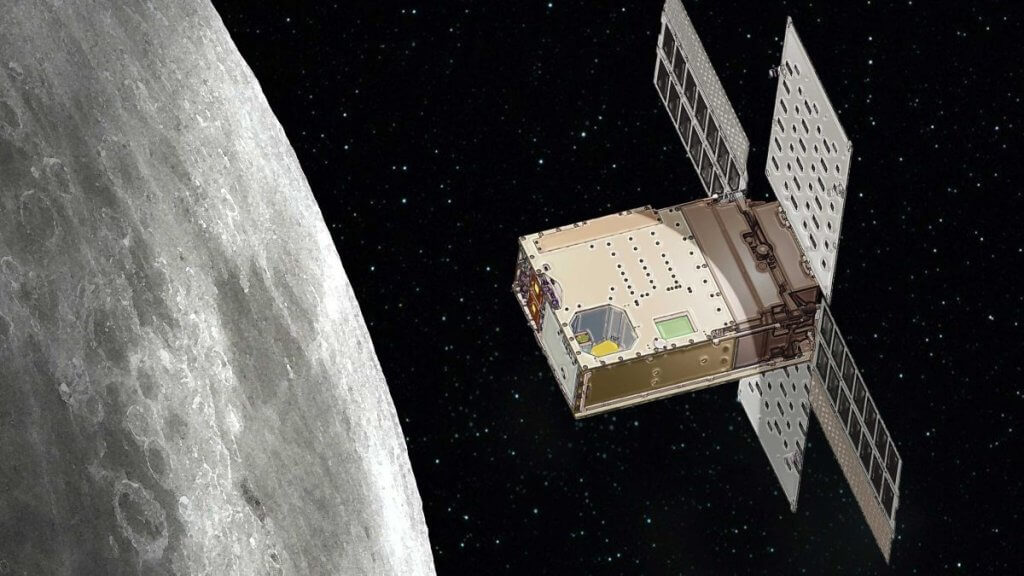
Tiny Lunar Flashlight moon probe is in trouble. NASA has one month to fix it. (Image Credit: Space.com)
A tiny NASA moon probe continues to battle thruster issues as it attempts to reach its destination, but there’s still time left to make a fix.
Lunar Flashlight launched in December 2022 on a quest to seek lunar ice. But on the way to the moon, the cubesat experienced thruster glitches on its mission to test a new “green” propellant. NASA officials downgraded its mission from orbiting to lunar flybys weeks ago. Yet the amended mission remains uncertain, agency officials said on Thursday (March 23).
“The operations team has been working on ways to restore partial operation of one or more thrusters to keep the spacecraft within the Earth-moon system,” NASA officials stated in a blog post (opens in new tab).
“They have had some success, but continue to try new things to clear the suspected obstructions in the thruster fuel lines,” the post continued. “They have until the end of April to generate the required thrust to preserve the opportunity to allow for monthly flybys of the lunar south pole.”
Related: These two tiny spacecraft will help pave the way for astronauts to return to the moon
Lunar Flashlight launched in December 2022 atop a SpaceX Falcon 9 rocket. Riding with it was a private Japanese moon lander carrying the Emirati Rashid lunar rover, which remains on track for a touchdown on the moon in April. The NASA cubesat, however, has had a few issues.
Three days after launch, Lunar Flashlight’s experimental propulsion system did not deliver as much thrust as expected; three of the four system thrusters weren’t working. As weeks of troubleshooting stretched to months, NASA elected in February to abandon the prime mission: To reach a near-rectilinear halo orbit (NRHO) ahead of that path’s planned use by NASA’s Gateway space station. (Another testbed moon mission, CAPSTONE, is in that orbit and can ferry information on it to engineers.)
NASA and mission partners at the Georgia Institute of Technology emphasize the lunar flybys will still be valuable, as they will bring the cubesat by the south pole of the moon where NASA’s Artemis program aims to land astronauts as soon as 2025. But that’s assuming the miniaturized propulsion system brings the cubesat by the moon as planned; in any case, the agency said it will learn lessons from the experience that will help with future spacecraft design.

“Though we hoped the propulsion system would perform perfectly, encountering and responding to these issues is an expected part of a technology demonstration mission like this,” Justin Treptow, deputy program executive for NASA’s small spacecraft technology program, said in the statement.
“Flight testing, evaluating, and troubleshooting this system all help fulfill the mission’s primary objective to explore the actual in-space performance of this novel propulsion system,” Treptow added.
Elizabeth Howell is the co-author of “Why Am I Taller (opens in new tab)?” (ECW Press, 2022; with Canadian astronaut Dave Williams), a book about space medicine. Follow her on Twitter @howellspace (opens in new tab). Follow us on Twitter @Spacedotcom (opens in new tab) or Facebook (opens in new tab).





